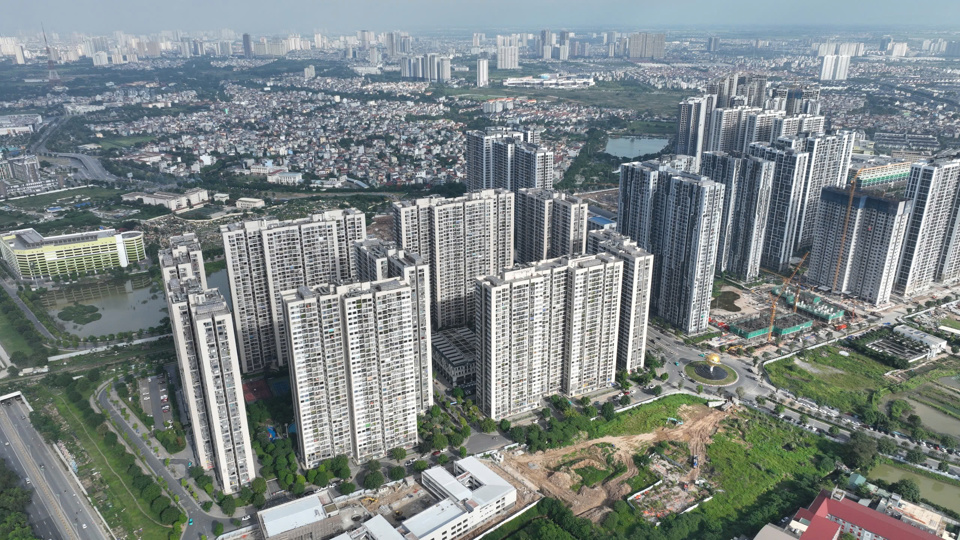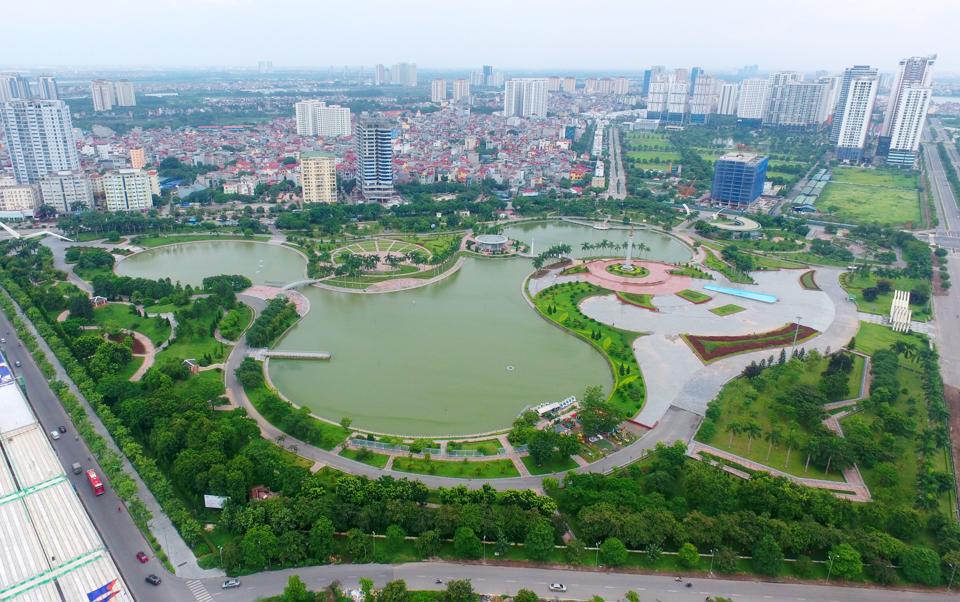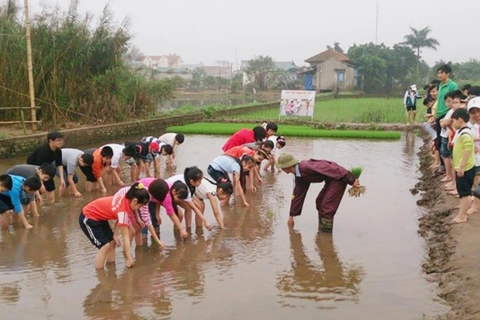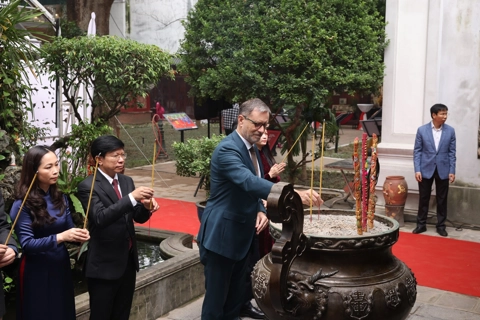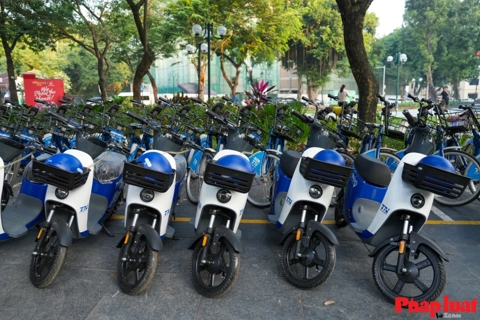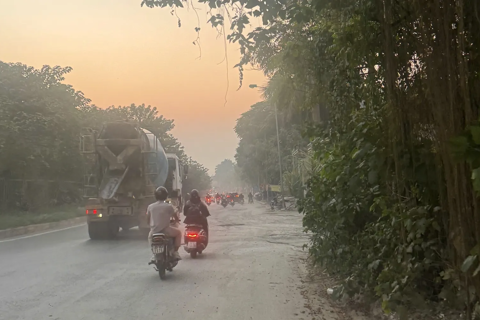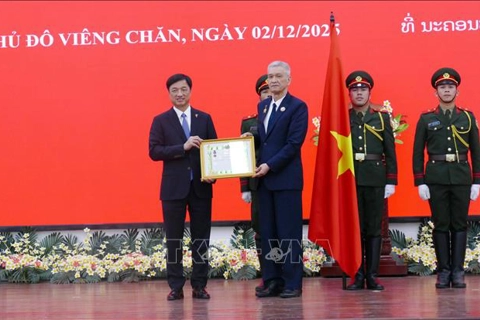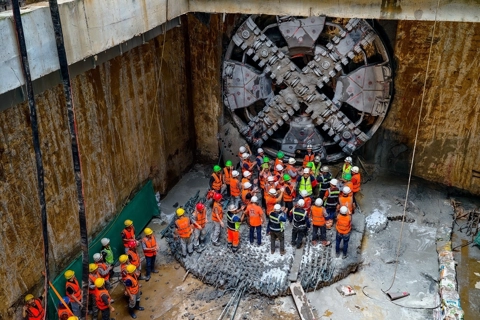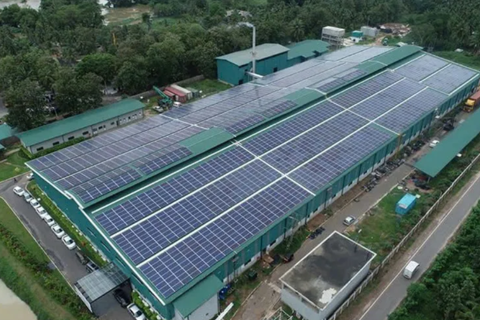Hanoi urged to create functional cities to stabilize housing prices
The development of satellite cities and the creation of a mass transit network are among the most highly regarded solutions in the search for an optimal urban structure for Hanoi.
The creation of functional urban zones and developments not only helps generate commercial opportunities and expand housing availability but also contributes to stabilizing property prices.
| New residential areas along Thang Long Boulevard in Nam Tu Liem District. Photo: Pham Hung/The Hanoi Times |
According to the urban master plan until 2045, with a vision to 2065, Hanoi is set to become a multi-centered metropolis. Large-scale transportation simulations typically precede urban planning efforts in similar cases worldwide and continue to play a critical role in the process as it is implemented and run. The global financial crisis of 2008 significantly slowed down new urban projects, as their attractiveness depended largely on consumer purchasing power and the responsiveness of financial institutions.
However, with recent positive macroeconomic developments, the prospects for well-planned urban areas with prime locations and modern infrastructure are regaining momentum. Government decisions on urban expansion in western Hanoi have aroused considerable interest, particularly among those invested in Hanoi’s transformation into a highly competitive capital city.
Notably, the government has revived the Hanoi National University project in Hoa Lac, which spans nearly 1,000 hectares and has accelerated the development of the Hoa Lac High-Tech Park - two critical components of Hanoi’s knowledge economy. Together, these projects form a dynamic urban corridor along Thang Long Boulevard, connecting the city center with the western satellite urban cluster, including Hoa Lac High-Tech Park, Hanoi National University, and the Hoa Lac Satellite City.
Nearly two decades ago, I spoke at a conference and emphasized that if Hanoi were to achieve a sustainable urban future, its path would undoubtedly be laid on steel rails.
Today, that vision is becoming a reality. Hanoi has operationalized several urban rail lines and is actively expanding its metro network. By the directive of the Politburo, the city aims to complete 14 metro lines, as well as key ring roads, gateway interchanges, and bridges over the Red River by 2035. These infrastructure developments are not merely about expanding the city’s spatial footprint or easing traffic congestion; they mark a fundamental shift in integrating satellite urban zones and planned residential areas into the city’s real estate landscape.
The establishment of a highly skilled workforce corridor, combined with Transit-Oriented Development (TOD), will enhance land-use efficiency, allowing for mixed-use urban environments. This approach contrasts sharply with the outdated concept of dormitory towns, which primarily consist of low-density housing designed for residents who commute to work downtown.
New urban developments in Hanoi will be designed as self-sufficient cities, featuring significant employment hubs, prioritizing pedestrian accessibility, and intentionally integrating mixed-use spaces. Unlike conventional urban zoning, these new neighborhoods will exhibit greater flexibility. For example, in commercial districts, the upper floors of high-rise buildings will be designated for residential use. This strategy avoids the pitfalls observed in countries like the UK and North America, where monofunctional business districts become desolate and unsafe outside working hours.
| Hoa Binh Park. Photo: Pham Hung/The Hanoi Times |
Greater efficiency in land-use planning
Furthermore, land-use planning will incorporate lifecycle-based considerations. High-rise developments will create high-density living environments conducive to social interaction and idea exchange, while also preserving ground-level spaces for greenery and water bodies. Such settings are ideal for young urban professionals, commonly known as yuppies, who thrive in vibrant, intellectually stimulating environments. Meanwhile, low-rise housing, thoughtfully integrated with surrounding traditional villages, will cater to growing nuclear families or extended households. Over time, younger generations will naturally replace their predecessors in high-rise residences, ensuring a continuous and dynamic urban ecosystem. Ultimately, this model fosters an environment that stimulates creativity, facilitates extensive networking, and supports high-value knowledge-based industries.
The compact city model, with its high residential density, is a critical factor in urban competitiveness. Public spaces designed for social interaction - including exhibition centers, theaters, clubs, waterfront promenades, and pedestrian-friendly commercial districts - will be strategically positioned to serve as hubs for creative exchange and knowledge sharing.
Housing quality encompasses measurable attributes such as floor space, number of bathrooms, and building height, along with qualitative factors like durability and compatibility with contemporary construction technologies. However, conventional housing statistics often overlook a critical dimension: social positioning. This oversight has contributed to the paradox of simultaneous housing shortages and surplus floor space in many market economies, particularly in Western countries - a trend that is also emerging in Vietnam. Essentially, many housing units fail to meet acceptable standards of social desirability.
For Hanoi, the vision of a new urban landscape rooted in TOD principles aligns with the city’s rapid development, particularly in the eastern and western districts. Emerging opportunities suggest a potential breakthrough in urban quality, particularly in transportation infrastructure. As Hanoi continues to evolve into a well-integrated and livable metropolis, these developments provide a viable solution for increasing housing supply and stabilizing property prices in the near future.

